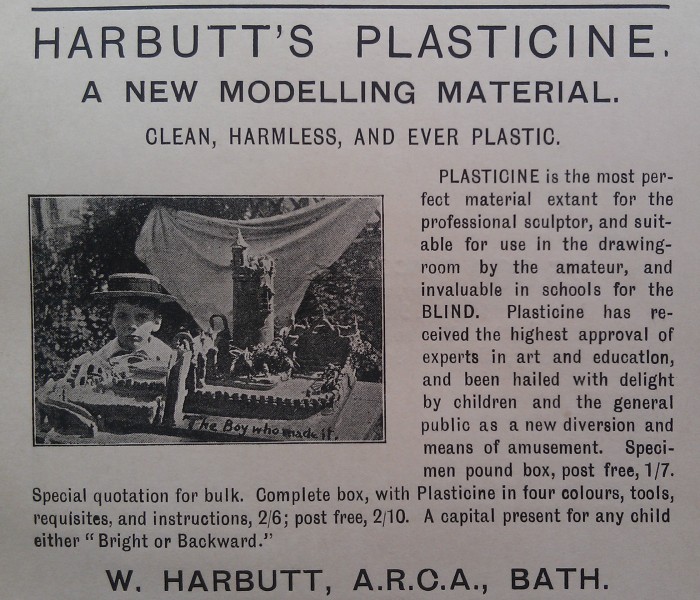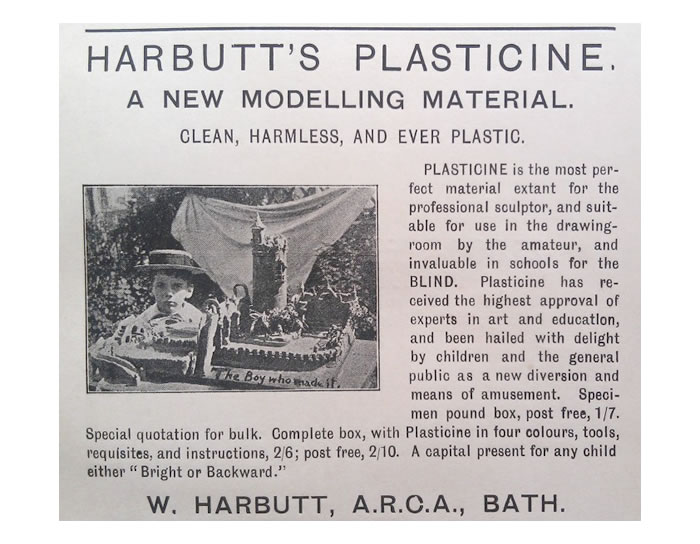
Early ad for plasticine, 1899.
I found this ad in a copy of The Butterfly, a literary magazine published in London in March of 1899. This must be one of the very earliest ads for plasticine, which was invented in 1897 by an art instructor named William Harbutt. After teaching at the Royal College of Art he moved to Bath in 1874, where he founded his own academy, the Paragon School of Art. Harbutt noticed that many of his beginning students had difficulty using clay, which was heavy and often dried out before projects could be completed. In the search for a suitable alternative he began experimenting with different substances at home, involving the whole family and using a garden roller to squeeze excess water out of his concoctions. Harbutt perfected the formula in 1897 and began supplying it to his students, and then to other artists who heard of the material by word of mouth. But it was his grandchildren’s interest in the substance that convinced him he might have a successful toy in the making. The patent on plasticine was granted in 1899, so this must be one of the earliest ads for the new material, and I strongly suspect that the rather dour child in the photo is Harbutt’s grandson. Later Harbutt would hire the graphic designer John Hassell, who became famous for his commercial posters, to design colourful and eye-catching ads, as well as the plasticine packaging. Harbutt’s big break came when he was able to purchase an ad in a new publication called The Royal Magazine, which premiered in 1898. Unfortunately, I can’t determine whether that ad appeared before this one did. This ad is, in any case, a delightful bit of late-Victorian marketing, particularly the tagline “A capital present for any child either ‘Bright or Backward'”.
For further reading, the best place to go is probably the book companion to the BBC documentary series James May’s Toy Stories, which included an entire episode on plasticine. You can buy the book online, and the Google Books preview includes a number of the pages on the history of plasticine. As part of the documentary, May and a group of volunteers created a plasticine garden and entered it in the Chelsea Flower Show, which you can see here.
I did find an image of one other early ad for plasticine, though this one is much more sophisticated and probably several years later than ours. If you know of any others that have been digitised please do leave a comment!





